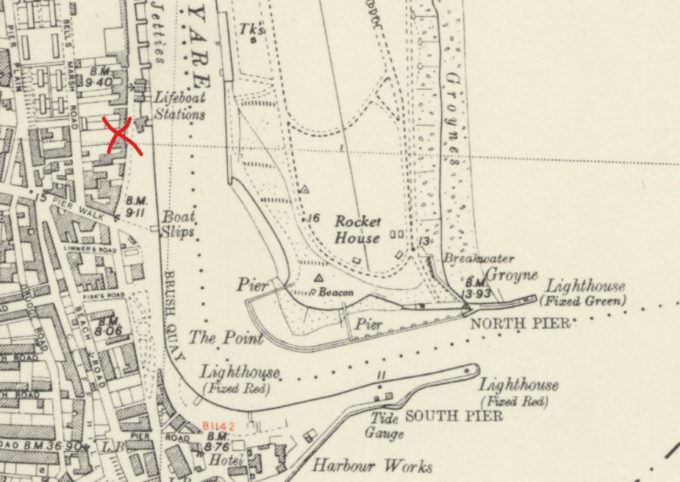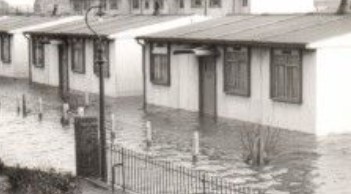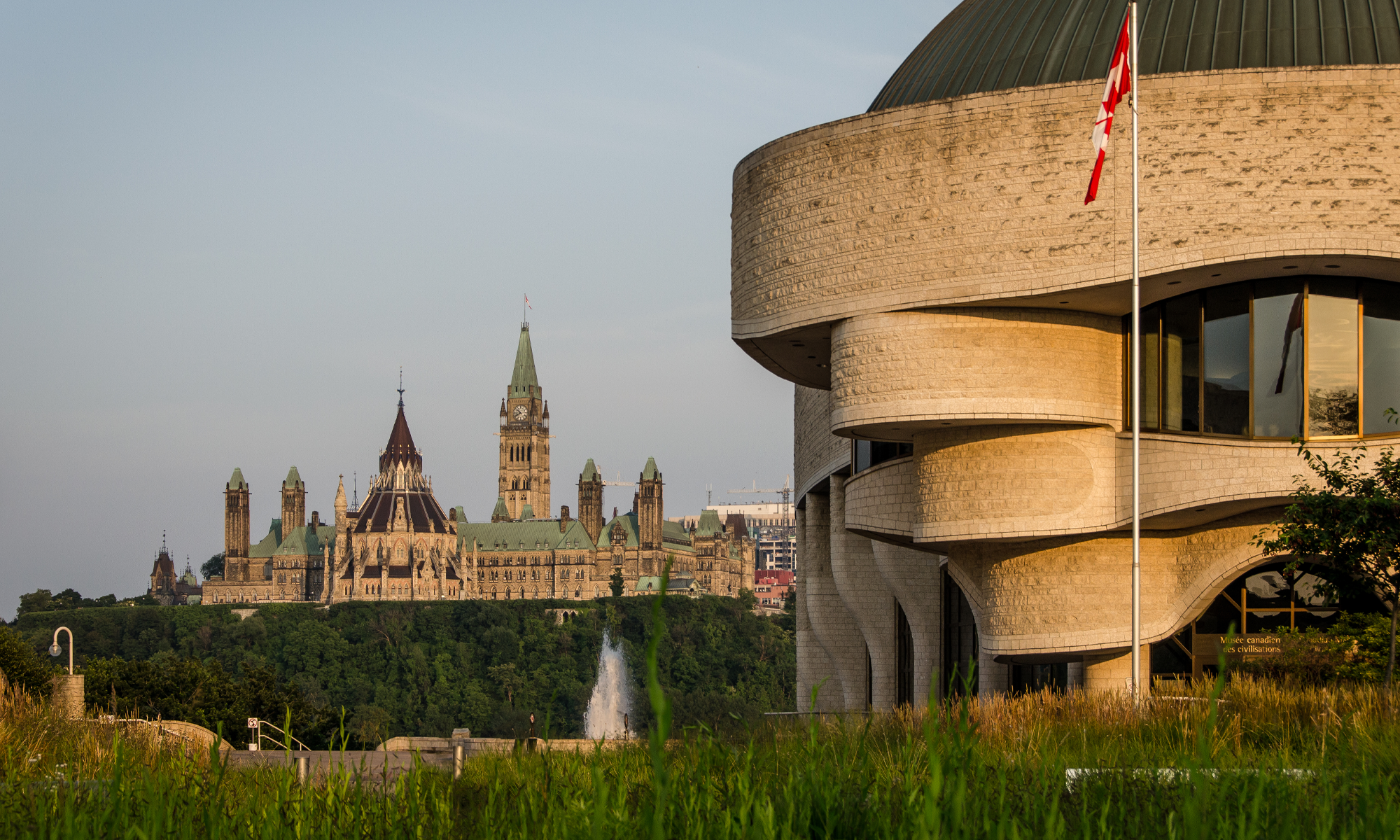Approaching the 70th anniversary of the North Sea Flood of 31 January – 1 February 1953, I’m recalling my experience.
 The home we rented, shown by the red cross, was on Riverside Road in Gorleston, Norfolk, opposite the Lifeboat Station on the River Yare, about half a kilometre from the harbour mouth to the North Sea. I enjoyed watching ships coming and going, including fleets of herring drifters in the Autumn. Post-war, fresh fish and seafood were readily available to supplement rationed food. It was a short walk to a large sandy beach.
The home we rented, shown by the red cross, was on Riverside Road in Gorleston, Norfolk, opposite the Lifeboat Station on the River Yare, about half a kilometre from the harbour mouth to the North Sea. I enjoyed watching ships coming and going, including fleets of herring drifters in the Autumn. Post-war, fresh fish and seafood were readily available to supplement rationed food. It was a short walk to a large sandy beach.
I was seven years old in 1953 and recall being woken up by my parents putting boxes in my bedroom on the upper floor. I went back to sleep. Seawater rose to perhaps a foot or more In the house. In the morning I found they’d blocked the top of the stairs to stop me from getting into the muddy mess on the ground floor. Things they couldn’t move upstairs were piled high, and dry, on a table.
 Folks nearby in the single-storey prefabs by Bells Marsh Road were totally flooded out. Pre-fabs were an answer to the post-WWII housing crisis. typically 600 sq ft with two bedrooms, a living room, kitchen, and bathroom.
Folks nearby in the single-storey prefabs by Bells Marsh Road were totally flooded out. Pre-fabs were an answer to the post-WWII housing crisis. typically 600 sq ft with two bedrooms, a living room, kitchen, and bathroom.
Fireman George Sadd, credited with saving 27 people by carrying them from Bells Marsh Road on his back, was awarded the George Medal.
Water quickly receded in our house but stayed in a crawl space underneath the main floor. Our back garden remained flooded, as did the pre-fabs, it may have been for a fortnight or more. I took advantage by playing boats with two small wooden boxes of the type used for shipping kippers or bloaters that had drifted to the garden in the flood.
I was told the water in our house hadn’t come over the quay but up through the drains that lacked a backup valve.
The sea salt that had permeated into the house plaster walls was expelled as a white powder for a long time. That probably motivated our move inland to Bradwell a couple of years later.
Memory is funny! You remember small things like the can of coffee donated in the name of Haile Selassie, Emperor of Ethiopia.
Although flooded we were fortunate. Ten people lost their lives in Great Yarmouth and Gorleston, 5,000 were temporarily homeless.
The flood, resulted from storm surge on top of a high tide. 307 people died along the east coast — Norfolk, Suffolk and Essex. In total more than 2,500 were killed including 1,835 people in the Netherlands.
A video on the event and a later one in 2013 is at https://www.youtube.com/watch?v=hkkHBcjtRyM


A piece of history of which I wasn’t aware…interesting how children view a natural disaster compared to adults… Those pictures are quite chilling.
In 2015 my husband and I toured the Delta Project in the Netherlands, massive storm gates that can be closed at the mouth of the Schelt River, that was erected in response to that flood. At the visitor centre they had a re-enactment of the flooding with video and sound and wind blowing through the “bedroom” we were standing in, but fortunately not with real water coming in. It was eerily impressive. I wonder if England has constructed a similar storm protection system?